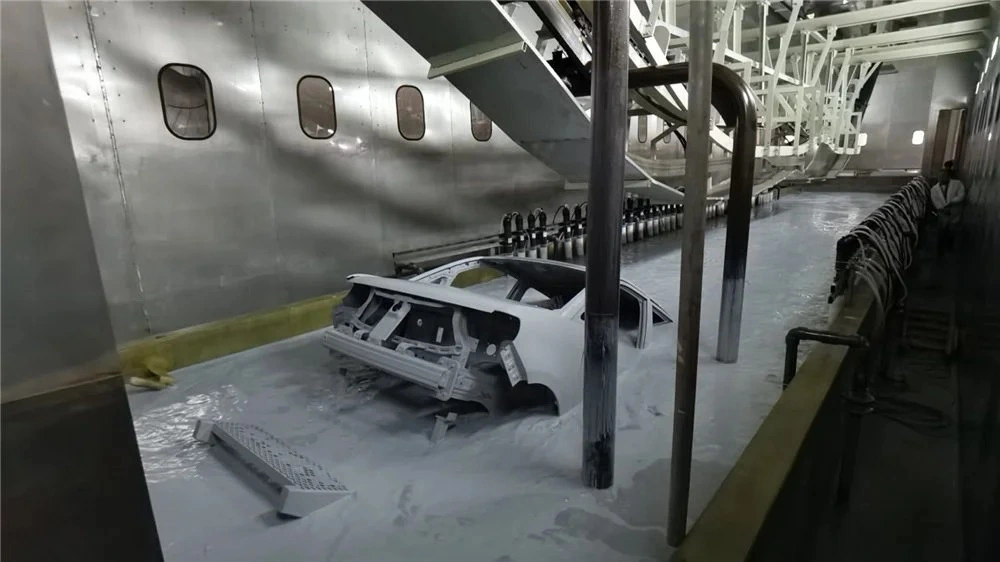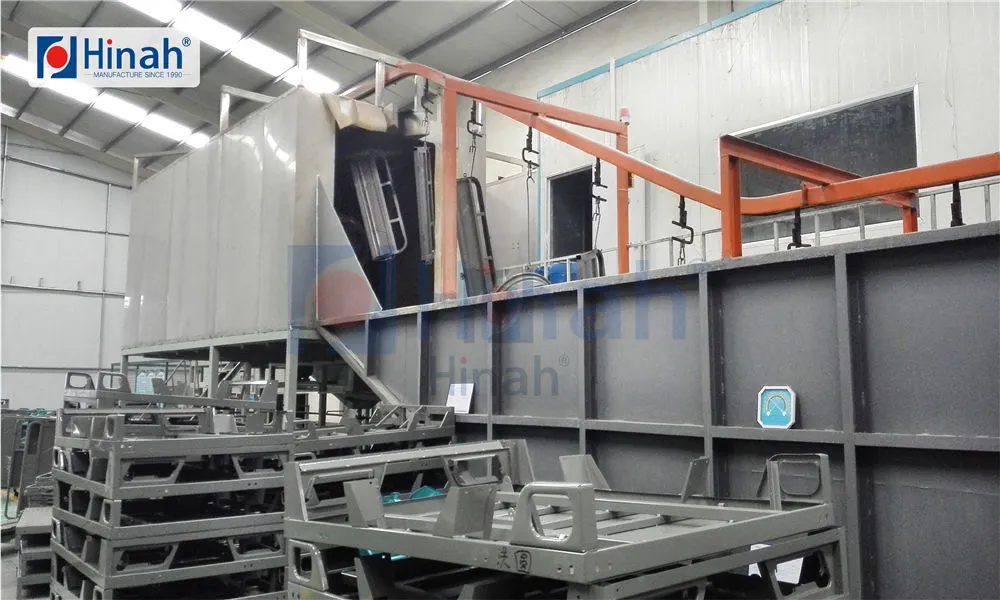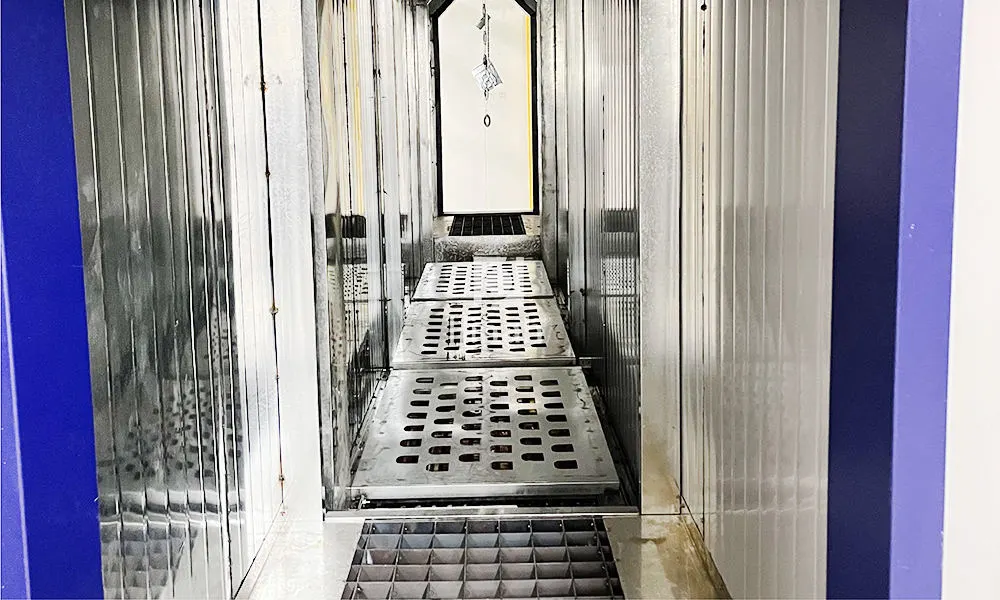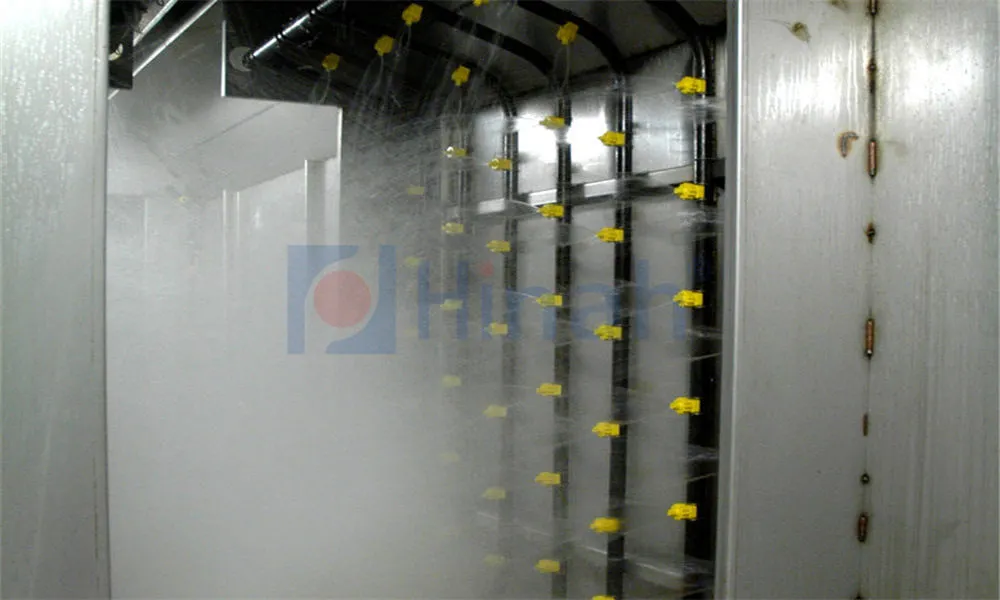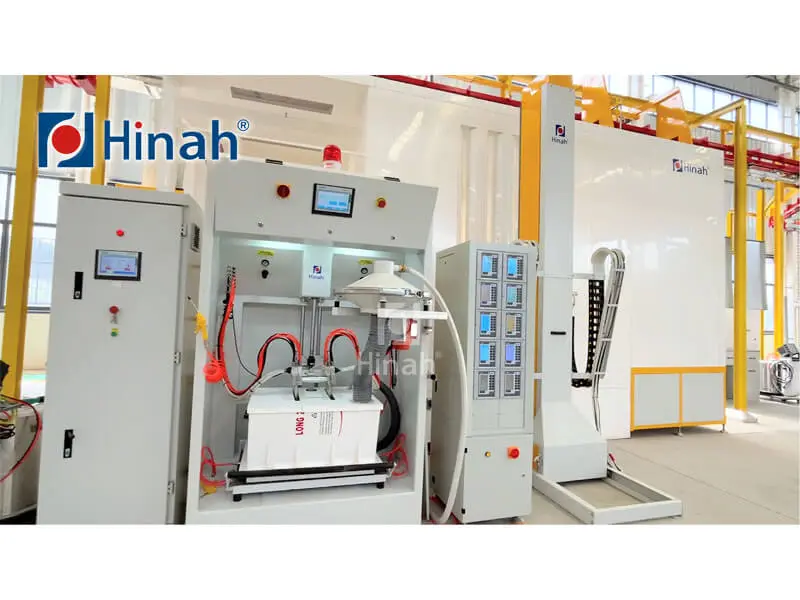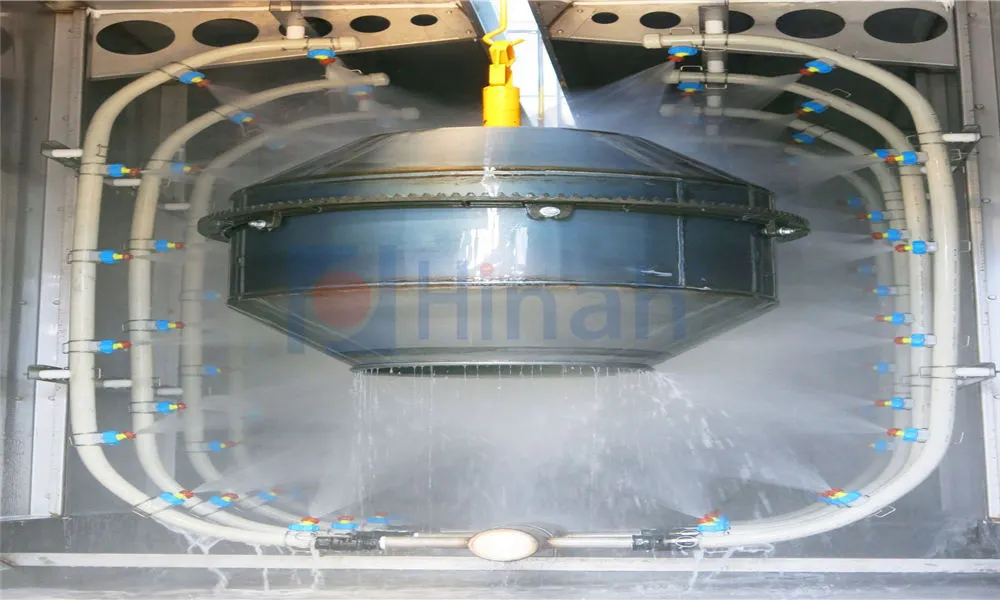When it comes to achieving durable, high-quality finishes in manufacturing and construction, industrial painting equipment plays a pivotal role. As industries increasingly adopt powder coating for its eco-friendly and efficient properties, understanding the right equipment becomes crucial. Powder coating, a dry finishing process, relies on electrostatic charges and heat to create a resilient layer, making it a staple in sectors like automotive, aerospace, and furniture. In this comprehensive guide, we’ll dive into the core aspects of industrial painting equipment, compare options, provide selection tips, discuss costs, and explore technological advancements. Whether you’re a business owner or a technician, this article will help you navigate the world of industrial painting systems, with insights into trusted brands like HANNA.
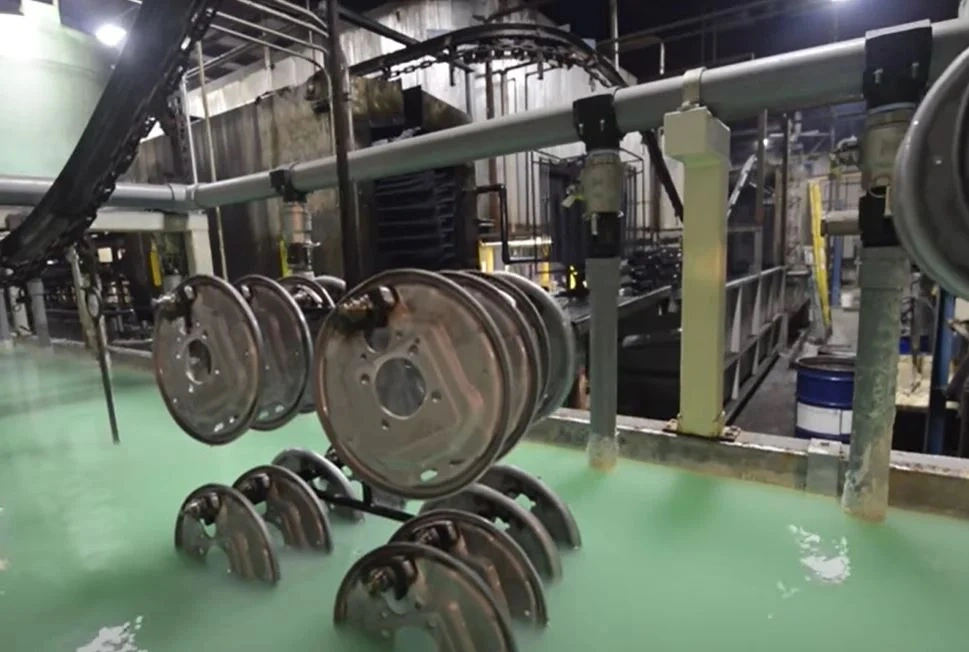
Industrial painting equipment encompasses a range of tools and machines designed for applying coatings to large-scale surfaces. This includes spray guns, booths, ovens, and automated systems, all tailored to handle materials like metals, plastics, and composites. The primary goal is to ensure uniform coverage, corrosion resistance, and aesthetic appeal. In powder coating, equipment must manage electrostatic application and curing processes efficiently. For instance, HANNA’s line of industrial painting equipment integrates advanced controls to minimize waste and maximize output. As environmental regulations tighten, investing in reliable industrial painting equipment not only boosts productivity but also supports sustainability by reducing VOC emissions.
Comparing Key Types of Industrial Painting Equipment
When selecting industrial painting equipment, it’s essential to compare different types to find the best fit for your operations. Here’s a breakdown of common categories:
Spray Guns and Applicators: These are the workhorses of powder coating. Manual spray guns offer flexibility for small batches, while automatic systems from brands like HANNA provide consistency for high-volume projects. Compare electrostatic vs. non-electrostatic models; electrostatic guns use charged particles for better adhesion, ideal for complex shapes.
Powder Coating Booths: These enclosed spaces contain overspray and ensure safety. Downdraft booths are excellent for heavy parts, while crossdraft versions suit lighter applications. HANNA’s custom industrial painting equipment often includes modular booths with efficient filtration.
Curing Ovens: After application, curing ovens bake the powder into a hard finish. Convection ovens are common for even heat distribution, but infrared options from HANNA can speed up processes by 30%, saving energy.
Pre-treatment Systems: These prepare surfaces through cleaning and phosphating. Automated pre-treatment lines integrate seamlessly with other industrial painting equipment, enhancing adhesion and longevity.
Automated Robotics: For large-scale operations, robotic arms ensure precision and reduce labor costs. HANNA’s robotic systems can be tailored for custom industrial painting tasks, offering programmable paths for consistent results.
Comparing these options highlights how custom industrial painting solutions can address specific needs, such as handling unique part geometries or meeting high-throughput demands.
Applications and Selection Guide for Powder Coating Equipment
Industrial painting equipment finds applications across diverse industries. In automotive manufacturing, it’s used for coating car frames and wheels, providing scratch-resistant finishes. Aerospace sectors rely on it for aircraft components that withstand extreme conditions, while furniture makers use it for decorative and protective layers on metal frames. When selecting equipment, consider these factors:
Volume and Scale: For small workshops, manual spray guns might suffice, but large factories benefit from HANNA’s automated industrial painting systems, which offer scalability.
Material Compatibility: Ensure the equipment handles your substrates—e.g., conductive materials work best with electrostatic applications.
Environmental Factors: Look for energy-efficient models that comply with regulations. HANNA’s equipment often features low-emission designs, reducing the carbon footprint.
Customization Needs: If you require tailored solutions, opt for custom industrial painting equipment that adapts to unique workflows. HANNA provides consultative services to design systems that fit specific applications, from intricate parts to bulk items.
By aligning your choice with operational requirements, you can maximize the ROI of your industrial painting equipment investment.
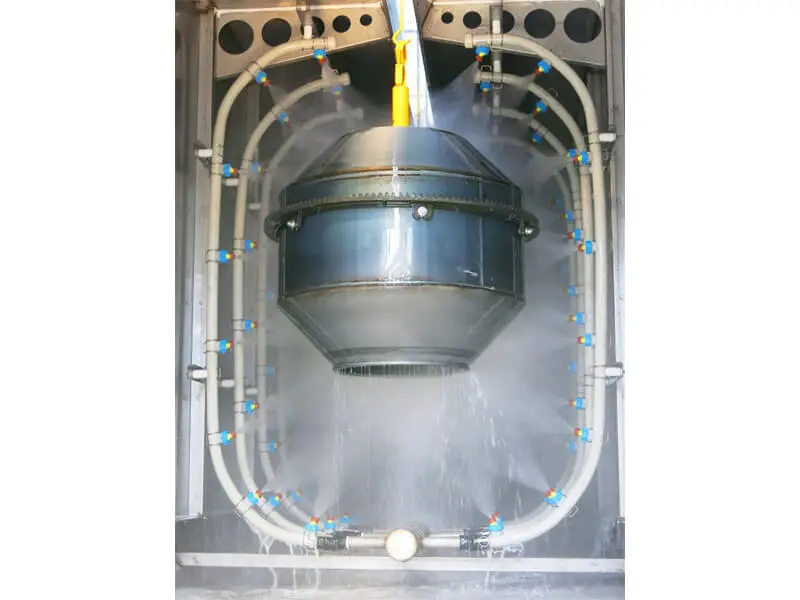
Sourcing Reliable Industrial Painting Equipment: Spotlight on HANNA
Finding the right supplier is critical for acquiring durable industrial painting equipment. HANNA has built a reputation as a leading provider in the global powder coating market, offering a range of products from basic spray guns to fully integrated lines. Their strength lies in delivering custom industrial painting solutions that cater to niche demands, such as high-speed coating for assembly lines or specialized finishes for architectural projects. When evaluating suppliers, consider their after-sales support, warranty terms, and industry certifications. HANNA, for instance, provides comprehensive training and maintenance services, ensuring that your industrial painting equipment remains operational with minimal downtime. Additionally, they leverage global supply chains to offer competitive pricing, making advanced technology accessible to businesses of all sizes.
Cost Analysis and Pricing Factors for Industrial Painting Equipment
The cost of industrial painting equipment varies widely based on type, automation level, and customization. A basic manual spray gun might start at a few hundred dollars, while a fully automated powder coating line from HANNA can range from $50,000 to over $200,000. Key factors influencing price include:
Automation Level: Automated systems reduce labor costs but have higher upfront expenses. For example, HANNA’s robotic industrial painting equipment may cost more initially but offer long-term savings through increased efficiency.
Customization: Custom industrial painting equipment, designed for specific applications, often carries a premium due to engineering and testing requirements.
Maintenance and Operating Costs: Energy consumption, powder waste, and spare parts add to the total cost of ownership. HANNA’s models are engineered for low maintenance, with modular components that simplify repairs.
Market Trends: As demand for eco-friendly solutions grows, prices for advanced, energy-efficient industrial painting equipment may rise, but incentives like tax breaks for green technology can offset this.
Budgeting for industrial painting equipment should include not only purchase price but also installation, training, and potential upgrades. HANNA offers financing options to help businesses spread costs, making it easier to adopt state-of-the-art systems.
Technological Advancements in Powder Coating Equipment
The field of industrial painting equipment is evolving rapidly, driven by innovations in automation, materials science, and IoT integration. In powder coating, recent advancements include:
Smart Control Systems: HANNA’s latest industrial painting equipment features IoT sensors that monitor parameters like temperature and humidity in real-time, optimizing coating quality and reducing defects.
Eco-Friendly Formulations: New powder coatings are being developed with recycled materials, and equipment is adapting to handle these sustainably. HANNA’s systems support low-temperature curing, cutting energy use by up to 20%.
Enhanced Electrostatic Technology: Improved gun designs ensure better coverage with less overspray, minimizing waste. For instance, HANNA’s custom industrial painting equipment often includes adaptive electrostatic controls that adjust to part shapes automatically.
Additive Manufacturing Integration: 3D-printed parts are increasingly coated using specialized industrial painting equipment, requiring precise application methods. HANNA is pioneering solutions that integrate with digital design files for seamless finishing.
These technologies not only boost efficiency but also align with global trends toward smart manufacturing, making industrial painting equipment a key enabler of Industry 4.0.
Investing in the right industrial painting equipment is essential for achieving high-quality, durable finishes in today’s competitive landscape. From comparing spray guns to exploring HANNA’s custom solutions, this guide has covered critical aspects to inform your decisions. As powder coating continues to dominate for its environmental and performance benefits, staying updated on equipment trends can give your business an edge. Remember, whether you’re upgrading an existing line or starting anew, prioritizing reliability and customization—like that offered by HANNA—will pay dividends in productivity and sustainability.
Frequently Asked Questions (FAQs)
Q1: What is the typical lifespan of industrial painting equipment?
A1: The lifespan of industrial painting equipment varies based on usage and maintenance. Well-maintained systems from reputable brands like HANNA can last 10-15 years, with regular servicing and part replacements. Factors such as operating environment and workload intensity also play a role—for example, automated powder coating lines might require more frequent updates to keep pace with technological advances.
Q2: How does powder coating compare to liquid painting in terms of equipment costs?
A2: Powder coating equipment often has higher initial costs due to the need for electrostatic guns and curing ovens, but it can be more cost-effective long-term. Industrial painting equipment for powder coating typically reduces material waste and eliminates solvents, leading to savings on consumables and compliance with environmental regulations. Brands like HANNA offer scalable options that can make the transition affordable for businesses of all sizes.
Q3: Can industrial painting equipment be customized for unique project requirements?
A3: Yes, many suppliers, including HANNA, provide custom industrial painting equipment tailored to specific needs. This might involve modifying booth sizes, integrating robotics for complex geometries, or adapting control systems for specialized coatings. Customization ensures that the equipment aligns with your production volume, part types, and quality standards, enhancing overall efficiency.
Q4: What safety features should I look for in industrial painting equipment?
A4: Key safety features include explosion-proof designs for powder handling, automated shut-off systems, and ergonomic controls to reduce operator risk. For powder coating, look for equipment with grounded components to prevent electrostatic discharges and proper ventilation to minimize fume exposure. HANNA’s industrial painting equipment often incorporates these features, along with compliance certifications from organizations like OSHA and ISO.
Q5: How can I estimate the total cost of ownership for industrial painting equipment?
A5: To estimate total cost, consider the purchase price, installation, maintenance, energy consumption, and potential downtime. For industrial painting equipment, factor in costs for powders, replacement parts, and training. Suppliers like HANNA often provide lifecycle cost analyses, helping you account for operational expenses over time. Additionally, investing in energy-efficient models can lower long-term utility bills, making the overall investment more economical.
This article is for informational purposes only. Always consult with experts like those at HANNA for tailored advice on industrial painting equipment.



